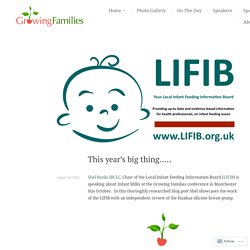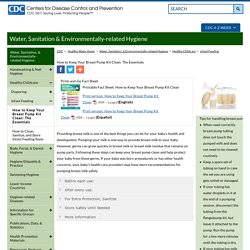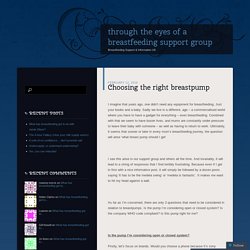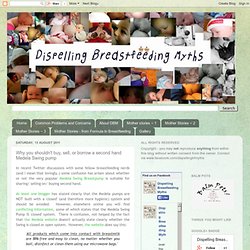

How to Fit Breast Pump Flanges. This year’s big thing….. – Growing Families. Shel Banks IBCLC, Chair of the Local Infant Feeding Information Board (LIFIB) is speaking about Infant Milks at the Growing Families conference in Manchester this October.

In this thoroughly researched blog post Shel showcases the work of the LIFIB with an independent review of the Haakaa silicone breast pump. This year’s big thing in the infant feeding related products world seems to be the Haakaa silicone breast ‘pump’. Coming from New Zealand, the company information on Facebook says they are a “baby brand that provides parents with Safe, Natural, Non-toxic, Eco-friendly baby products” The ‘buzz’ around this product is so strong that people all over the UK are importing from the other side of the world so they can get their hands on this item, and leaving rave reviews!
How to Keep Your Breast Pump Kit Clean: The Essentials. Skip directly to A to Z list Skip directly to navigation Skip directly to page options Skip directly to site content Healthy Water Sites Get Email Updates To receive email updates about this page, enter your email address: CDC Healthy Water Home Water, Sanitation, & Environmentally-related HygieneHealthy ChildcareInfant Feeding.

To Pump More Milk, Use Hands-On Pumping — Nancy Mohrbacher. For premature babies, mother’s milk is like a medicine.

Any infant formula these babies receive increases their risk of serious illness, so these mothers were under a lot of pressure to pump enough milk to meet their babies’ needs. Amazingly, when these mothers used their hands as well as their pump to express milk, they pumped an average of 48 percent more milk than the pump alone could remove. According to another study, this milk also contained twice as much fat as when mothers used only the pump. According to previous research, in most mothers exclusively pumping for premature babies, milk production falters after three to four weeks. But the mothers using this “hands-on” technique continued to increase their milk production throughout their babies’ entire first eight weeks, the entire length of the study.
How Much Milk Should You Expect to Pump? — Nancy Mohrbacher. About half a feeding if she is pumping between regular feedings (after about one month, this would be about 1.5 to 2 ounces (45-60 mL)A full feeding if she is pumping for a missed feeding (after one month, this would be about 3 to 4 ounces (90-120 mL) Time of day.

Most women pump more milk in the morning than later in the day. That’s because milk production varies over the course of the day. To get the milk they need, many babies respond to this by simply breastfeeding more often when milk production is slower, usually in the afternoon and evening. Through the eyes of a breastfeeding support group. I imagine that years ago, one didn’t need any equipment for breastfeeding.

Just your boobs and a baby. Sadly we live in a different, age – a commercialised world where you have to have a gadget for everything – even breastfeeding. Combined with that we seem to have busier lives, and mums are constantly under pressure to leave their baby with someone – as well as having to return to work. Ultimately, it seems that sooner or later in every mum’s breastfeeding journey, the question will arise ‘what breast pump should I get’ I see this arise in our support group and others all the time. Analytical Armadillo: Something To Consider When Buying an Electric Breast Pump. I've had a few requests to make yesterday's Facebook Status into a blog post so it has a static location, here it is :) Did you know that for over £25 less than the non code compliant Medela swing pump (priced at £99.99), an open system which isn't recommended for sharing or reselling - you can get a code compliant Ameda Purely Yours, closed system single electric pump?

(priced at £72.24 ) As you can also see on that page, click double and for £7 more than the single Medela swing, you can get the Ameda double Lactaline pump (£107.24) Ameda is a brand many Baby Friendly hospitals use due to code compliance issues, including my local hospital 9 yrs ago when I had my preemie. What is the code? If you're not familiar with the importance of the code, it's explained by Best for Babes Foundation here. Closed systems like the Ameda, have a proven airlock protection system, which prevent the air from the breast pump from coming in contact with milk. Hospital Grade Breastpumps for hire from Express Yourself Mums.
Open System Pumps vs. Closed System Pumps. Why you shouldn't buy, sell, or borrow a second hand Medela Swing pump. In recent Twitter discussions with some fellow breastfeeding nerds (and I mean that lovingly..) some confusion has arisen about whether or not the very popular Medela Swing Breastpump is suitable for sharing/ selling on/ buying second hand.

At least one blogger has stated clearly that the Medela pumps are NOT built with a 'closed' (and therefore more hygienic) system and should be avoided. However, elsewhere online you will find conflicting information, some of which states that the Medela Swing Pump IS 'closed' system. There is confusion, not helped by the fact that the Medela website doesn't actually state clearly whether the Swing is closed or open system. However, the website does say this: 'All products which come into contact with breastmilk are BPA-free and easy to clean, no matter whether you boil, disinfect or clean them using our microwave bags.'
Choosing a pump. Maximizing Production - Newborn Nursery at LPCH - Stanford University School ...